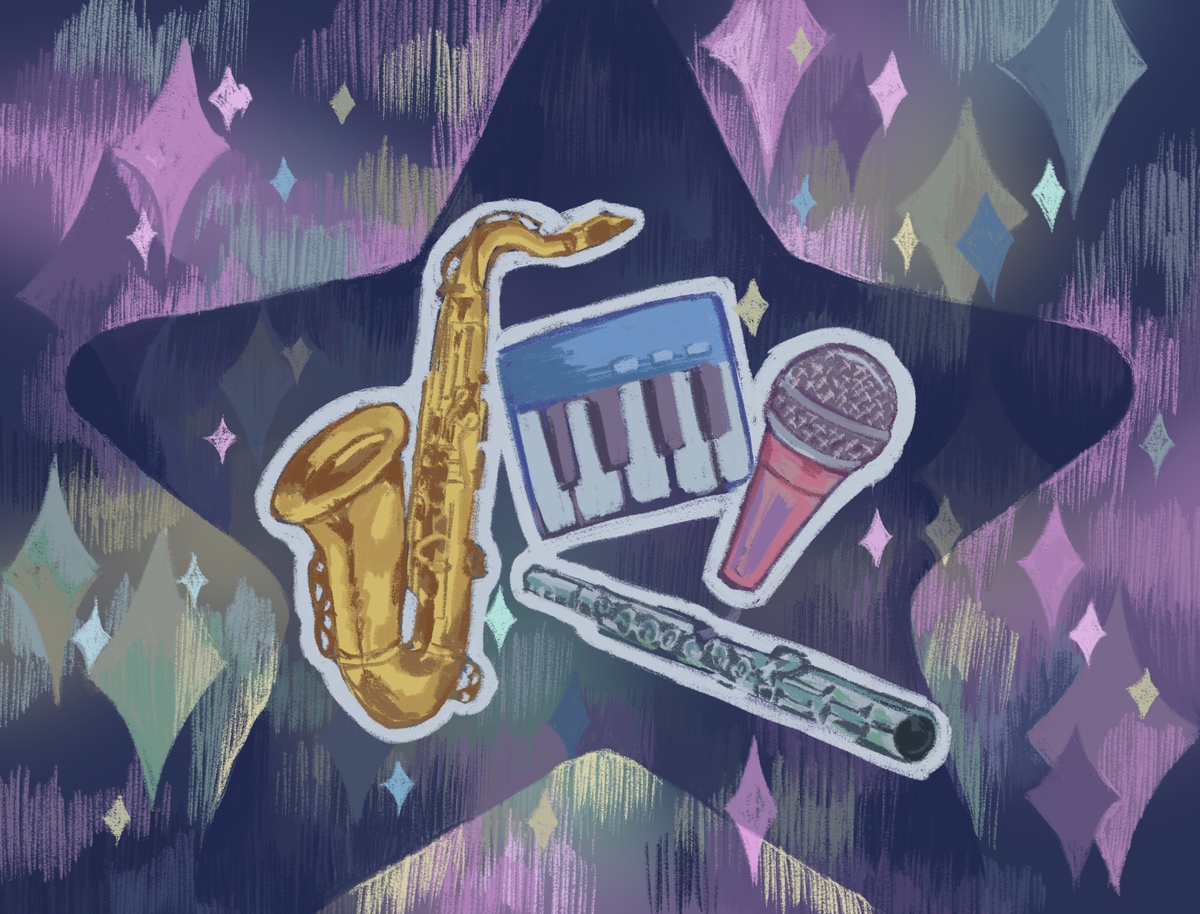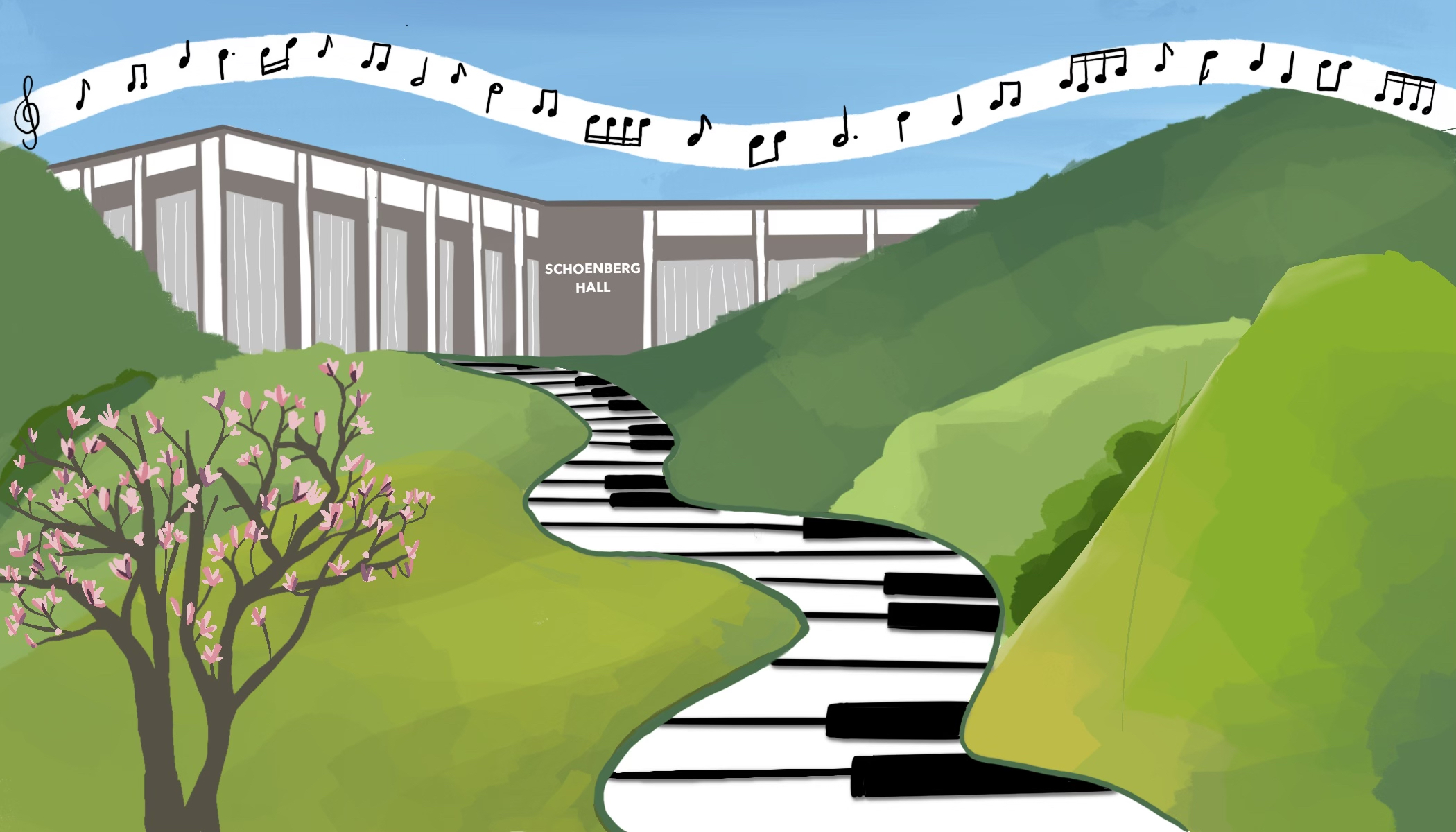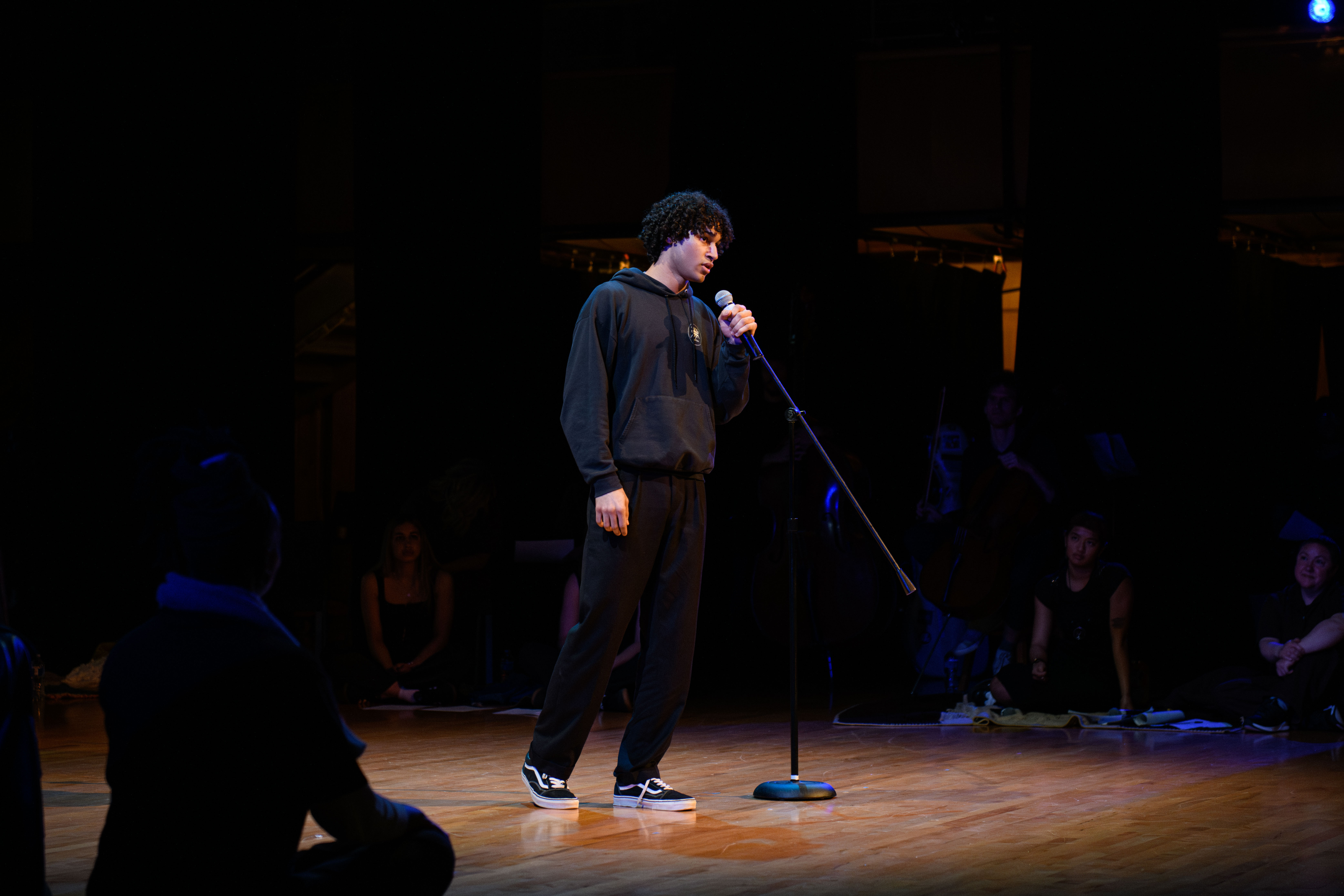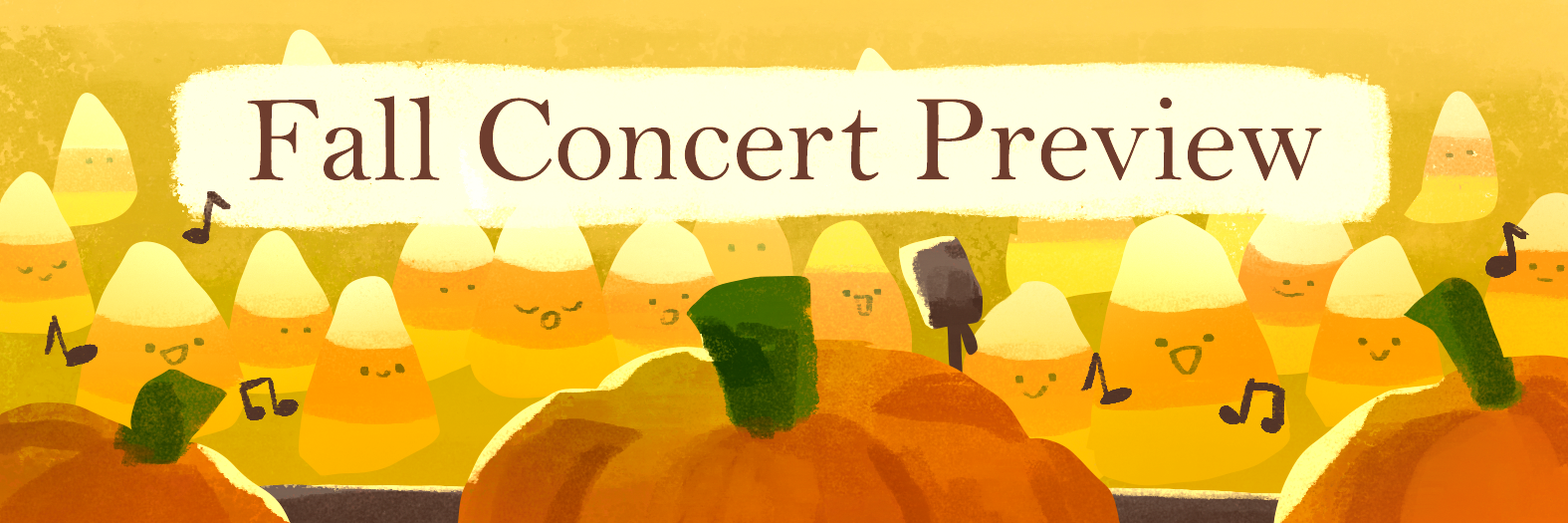Saxophonists play through contemporary scales, interactive modes at fall recital
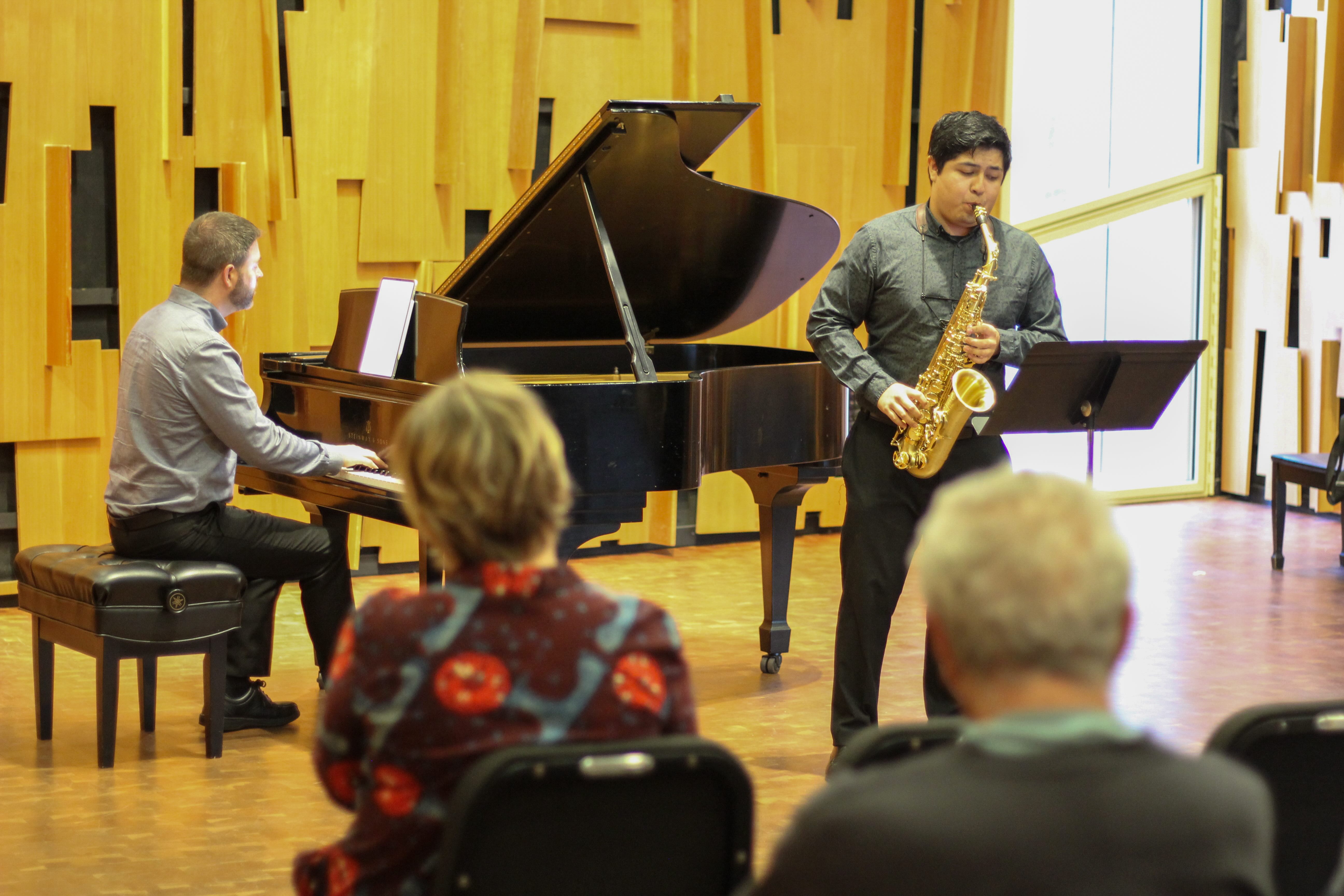
A student wearing a gray shirt and black pants plays the saxophone alongside a pianist. The UCLA Herb Alpert School of Music will hold its Fall Saxophone Studio Recital at the Ostin Music Center’s Ensemble Room on Nov. 17. (Courtesy of The UCLA Herb Alpert School of Music)
“Fall Saxophone Studio Recital”
Nov. 17
Ostin Music Center Ensemble Room
11 a.m.
By Viva Wertz
Nov. 14, 2024 3:34 p.m.
This fall, UCLA musicians will perform saxophone pieces ranging from classical to contemporary.
Taking place Sunday, the UCLA Herb Alpert School of Music’s Fall Saxophone Studio Recital promises an unconventional blend of 20th- and 21st-century compositions. Jan Berry Baker, vice chair of the Department of Music and a saxophone professor, said audiences will be invited to engage directly with the music and performers alike. Baker said the show will feature performances that push the boundaries of saxophone composition and include a diverse set of composers.
“It’s not like listening to Mozart and Beethoven,” Baker said. “You’re not going to hear that at this recital. … Even the traditional pieces that some of our first-year students are playing is not in that realm either. So all of it will sound like a little bit of a crossover between contemporary to experimental to classical to maybe jazz to some pop influences.”
[Related: Gramian-Emrani Center for Iranian Music opens, fostering cultural understanding]
Baker said the School of Music aims to put on saxophone recitals each year at the end of fall and winter quarters. The professor said she presents her students with the opportunity to perform in the recitals. Students designate anywhere from two to six hours each day for individual lessons and rehearsal, Baker said. Every week, students spend an additional 90 minutes exhibiting their progress to the rest of the performers and one hour with Baker for one-on-one coaching, she added.
This year’s fall recital will feature 10 pieces from nine performers, Baker said. She added that the performance will include everything from minimalist pieces like “Splinter,” by Chicago-based composer Marc Mellits, to “Lilac Tears,” by composer Jennifer Jolley – which features references to Prince’s sound. Daniel Reyes-Velarde, a graduate student in music performance with an emphasis in saxophone, said some of the other pieces include “Cyber Bird Concerto Op. 59” by Japanese composer Takashi Yoshimatsu, which is distinctive with its combination of jazz and classical music with bird song emulation, and “Nearly Waltz for Tenor Saxophone and Piano,” an experimental take on the classic waltz.
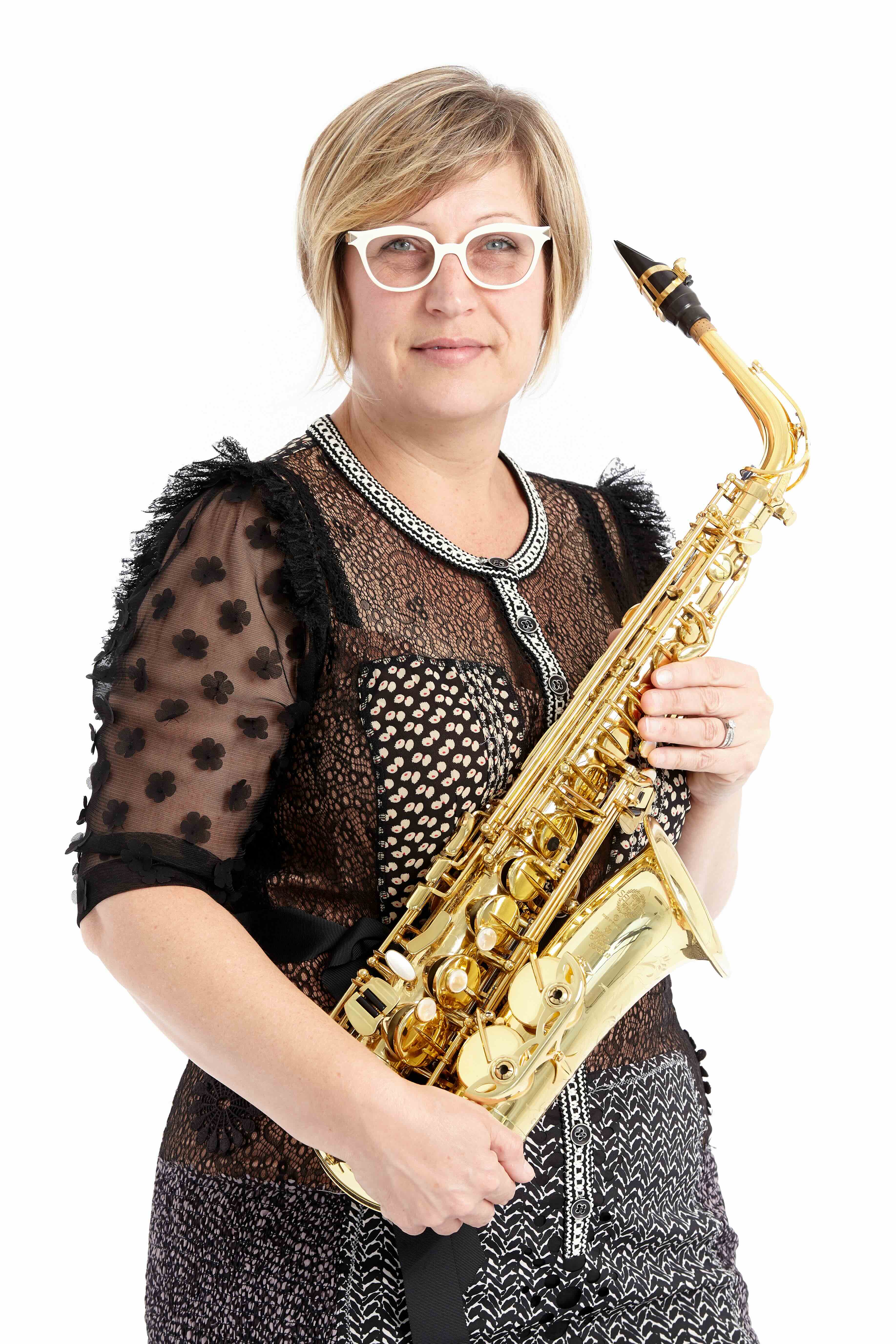
Reyes-Velarde said he will perform “Nuée Ardente,” a more experimental piece by French composer Vincent David. The sounds in the composition are meant to symbolize pyroclastic flow, or the currents of volcanic matter from an eruption, Reyes-Velarde said. One technique he utilizes is called slap tongue, Reyes-Velarde added, in which one creates suction on the saxophone reed with their tongue. He said using certain techniques on the saxophone allows the piece to mimic the intensity of a volcanic eruption.
“Instead of blowing notes, you could emulate the sound of a spark being lit by blowing … into the instrument,” Reyes-Velarde said. “The pure air alone going into the horn creates a special sound.”
Olivia Phaneuf, another performer and a doctoral student in musical arts, will perform “Westland,” composed by Andy Scott, as a solo tenor saxophone piece and “Variations Saxophoniques,” by French composer Fernande Decruck, with a quartet. Phaneuf said “Westland” uses a technique called multiphonics in which two pitches are played at once, creating an uncomfortable clashing sound. Phaneuf said this piece also uses sustained notes and vibrato, adding more peaceful melodies to the composition.
[Related: Sumeet Anand Pandey brings Dhrupad music, Indian traditions to UCLA]
Similar to some of the pieces, the performance as a whole will also take an unconventional approach, Baker said. She added that the audience will get the opportunity to converse with the performers and ask about their processes after the performance.
“We want to emphasize that this is not a concert where you’re going to have to come and sit in a concert hall and not speak and clap only when you have to or when you’re supposed to, and have it be one of those weird things where there’s a big barrier between the audience and the performers,” Baker said. “Rather, the performers will try to engage the audience by speaking about the music – something that will allow listeners to find a way into the music that they might not know otherwise – and allow for an engaged listening experience rather than a passive listening experience.”
Looking ahead, Baker said she is proud of her students’ work ethic, and they are excited to share the recital with audiences. She said experimenting with different approaches to this music helps her remain grounded and open-minded. Likewise, it is important for both art and non-art students to experience the recital for what it offers the mind, Baker added.
“Our daily lives have us listening passively … to music all the time,” Baker said. “I really do think that connecting with performers in such a way, learning new ways to hear things and stepping outside of what we do every day is what revives us all.”


